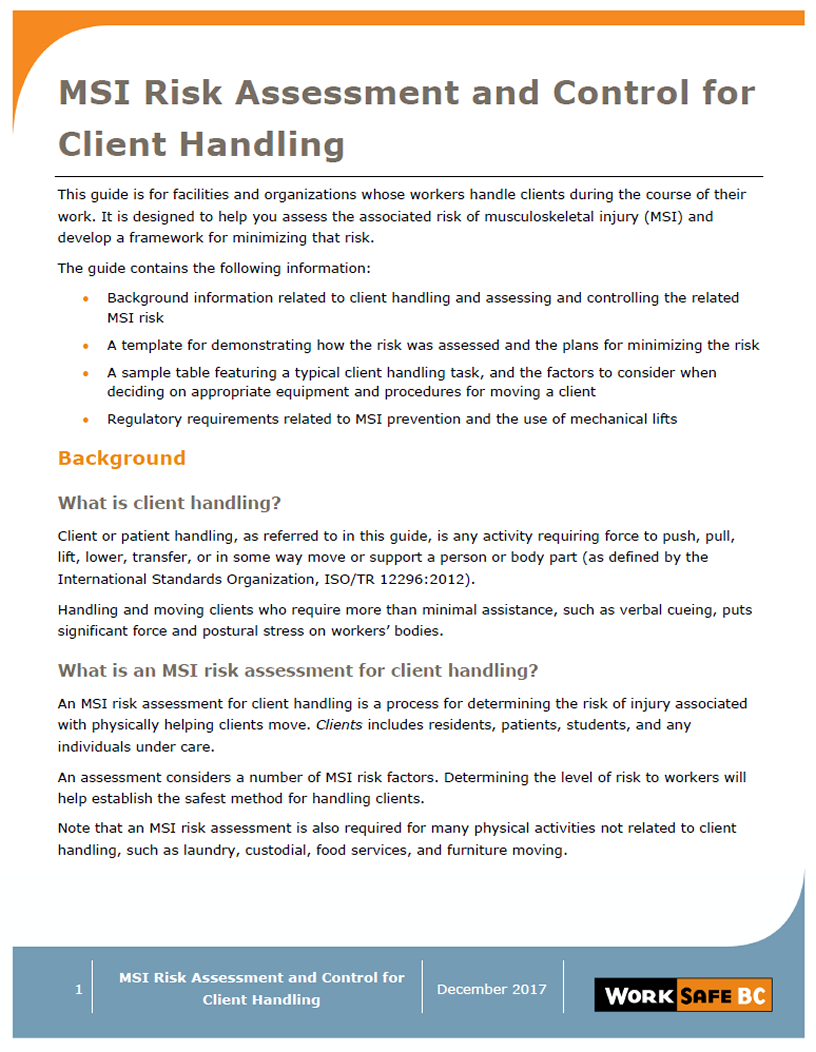Health Care & Social Services Planned Inspectional Initiative
The Health Care and Social Services Planned Inspectional Initiative focuses WorkSafeBC resources on identified high-risk work activities that drive both the serious injury rate and the time-loss claims rate.
- Our goals
- Our focus
- What you can do
Workers in the health care and social services subsector represent approximately 12 percent of B.C.’s workforce. The 2022 injury rates within health care and community social services reached a high of 17.1, well above the provincial injury rate of 2.4. In this subsector, 33.6 percent of all claims were related to overexertion injuries. Claims related to violence account for 58.9 percent of B.C.’s total number of violence-related claims.
Point-of-care interactions between workers and patients or other individuals pose the greatest risk of injury to workers, including serious injuries due to acts of violence. Our initiative focuses on work areas and occupations where interactions between the worker and the patient or other individuals can be observed.
Our goals
The goals of the initiative are to:
- Reduce the risk of workplace violence and related injuries to health care and community social services workers
- Reduce health care and community social services workers’ risk of overexertion or musculoskeletal injuries (MSIs) due to patient/individual lifting, patient/individual mobility limitations, and equipment/materials handling
Our focus
2024 inspectional approach
For 2024 inspections, prevention officers will take a risk-based approach to ensure that the most significant risks are effectively managed. This approach involves workers and employers identifying hazards, evaluating risks, and implementing the appropriate controls specific to the on-site activities. In addition, it focuses on employers ensuring these efforts are effectively communicated to workers and monitored through foundational occupational health and safety systems such as new and young worker orientations, training, supervision, incident investigations, worksite inspections, and (where applicable) joint health and safety committees that are effective, robust, and well supported.
Our focus in 2021–2024 is to:
- Apply point-of-care inspectional protocols focusing on violence and MSI prevention in the following health care classification units (CUs):
- Acute care (766001)
- Alcohol or drug treatment centre (766002)
- Community health support services (766006)
- Counseling or social services (766007)
- Long term care (766011)
- Residential social services facilities (CU766017)
- Continued enhanced focus to include the client/resident intake process, worker de-escalation training, communication methods, and workplace planning and design
- Educate employers, workers, supervisors, and joint health and safety committees on the basics of risk management and how to optimize their risk management efforts
What you can do
The following resources will help you better understand and address some of the health and safety issues we’ll be focusing on with our prevention activities. For more resources and information, please visit our Health Care & Social Services pages.


